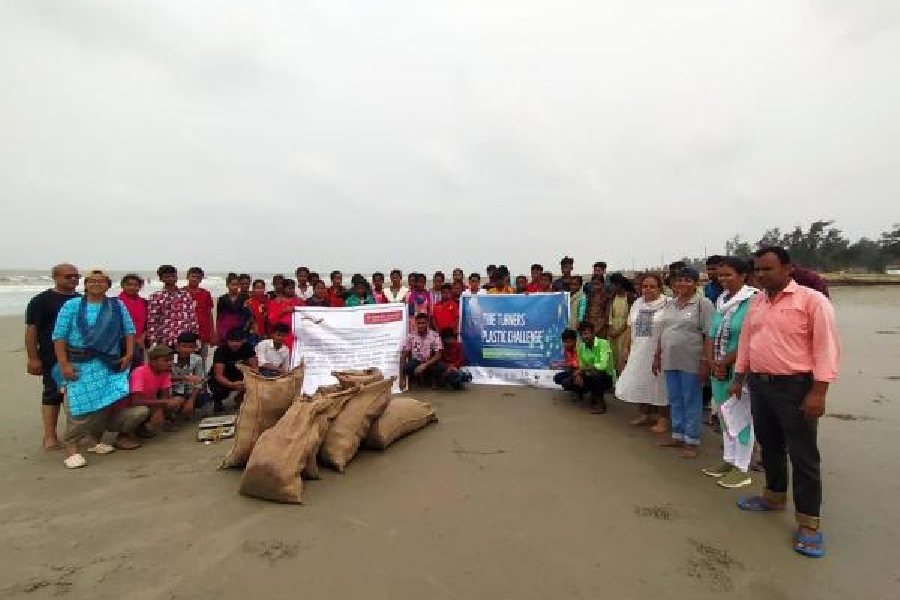A bunch of students on Thursday cleaned up a small stretch of the Gangasagar beach.
The plastic waste that was removed weighed 180kg, said officials of the organisation which organised the drive to mark World Oceans Day, which is celebrated on June 8 every year.
“The beach is 4km long. The children cleaned only 1km. The plastic litter on the entire beach must be close to 1,000kg,” said an official of WWF-India, which organised the clean-up.
Shantanu Gayen, headmaster of Dhablat Lakshman Parabesh High School, said the litter was stuffed into eight jute sacks before being put on scale.
“Plastic packets, bottles, plates, glasses, chips wrappers formed the bulk of the litter. Some of the waste was washed ashore. Much of the plastic waste is left behind by tourists. The local shops selling them are also to blame,” he said.
More than 20 students from the co-educational school — in Rudranagar in Sagar block, around 110km from the heart of Kolkata — took part in the drive.
Plastic waste is a major problem for the southernmost tip of Bengal, where the Ganga meets the Bay of Bengal.
Every year, a gigantic volume of plastic waste is collected from Gangasagar Mela, which is visited by millions of devotees.
The fragile mangrove ecosystem of the Sunderbans, adjacent to Gangasagar, is also at stake.
The presence of plastic increases the toxicity of the saline water, which, in turn, is feared to have a long-term impact on fishing and aquaculture, the livelihood of tens of thousands of residents of the Sunderbans.
Apart from the Bengal tiger, Gangetic dolphins and saltwater crocodile, the Indian Sunderbans, a Unesco World Heritage site, is also home to many other animals and birds. Environmentalists fear the increase in plastic waste will damage the biodiversity of the region.
The influx of plastic increases manifold after every devastating storm, when countless teams from Kolkata and other places reach the mangrove delta with relief material, almost all of it wrapped in plastic.
Saswati Sen, state director of WWF-India, which works for the protection of the environment, said the waste has been handed over to the local administration.
“Burning plastic emits toxic fumes. Landfill is also not the right option. The administration will find a way out,” she said.
An official of Sagarblock, part of the Kakdwip sub-division of South 24-Parganas, said: “We have four solid waste management units in the Gangasagararea. If the plastic waste is more than what these units can handle, we get in touch with NGOs to transport the waste into the mainland, even outside Bengal, where the plastic can be recycled or used as fuel by private companies.”
The non-recyclable plastic items are usually the ones less than 50 micron in thickness or multi-layered plastic used in packaging.
While cleaning the beach on Thursday, the children also rescued many red crabs stuck in discarded fishing nets left behind on the beach.
117 residents of Pavlov get Aadhaar cards
Altogether 117 inmates of Calcutta Pavlov Hospital, a government-run mental hospital, have received their Aadhaar cards last month.
This is their first identity card issued by the central government. Most of the inmates had no identity cards except for their disability certificates that are issued by the board of a medical college. Some might have had some identity card which they had left at their homes before they came to Pavlov mental hospital.
The Aadhaar cards were issued to them on the basis of the disability certificates.
An Aadhaar card camp was held at the hospital recently for the inmates.
The Pavlov mental hospital has 250 beds and at present it holds 672 inmates.
